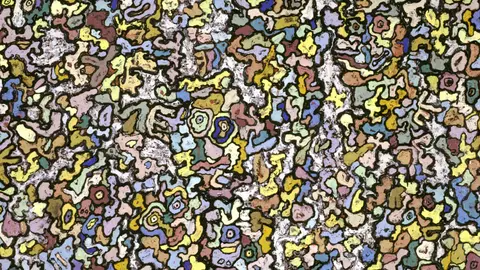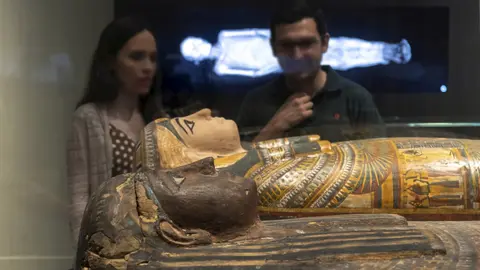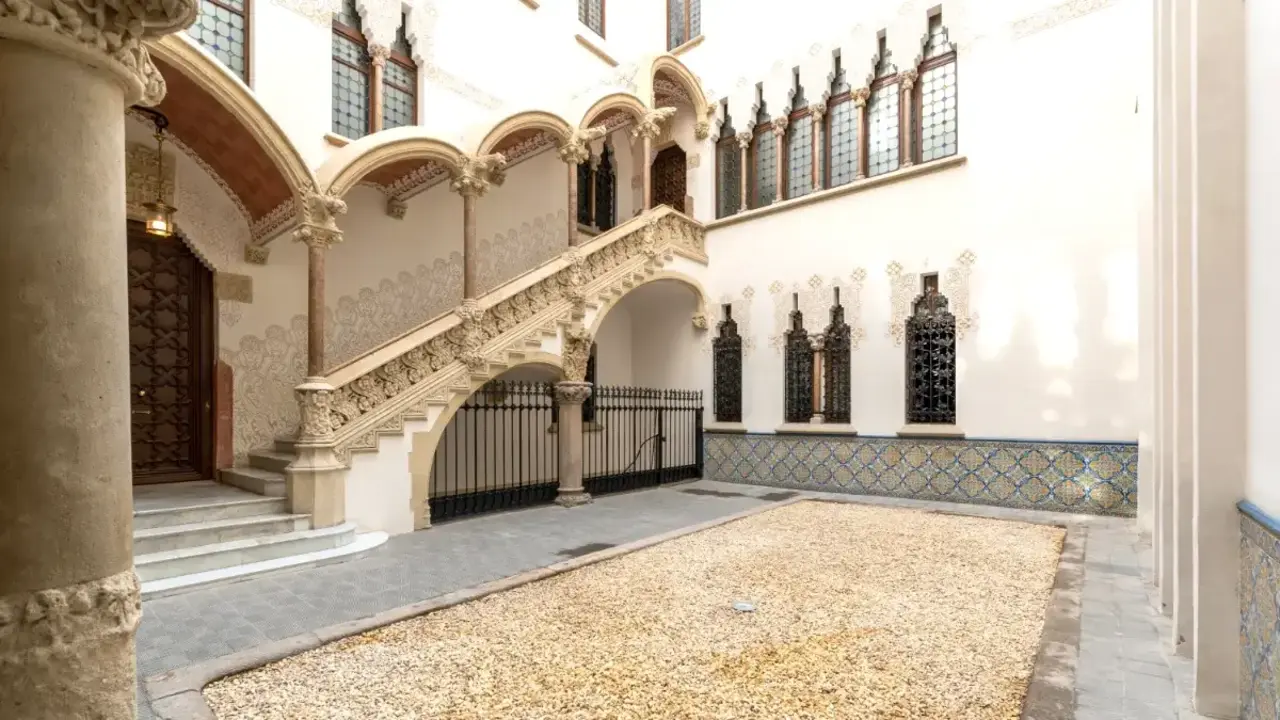The Judgement of Paris arrives at CaixaForum Barcelona: a Rubens painting is installed
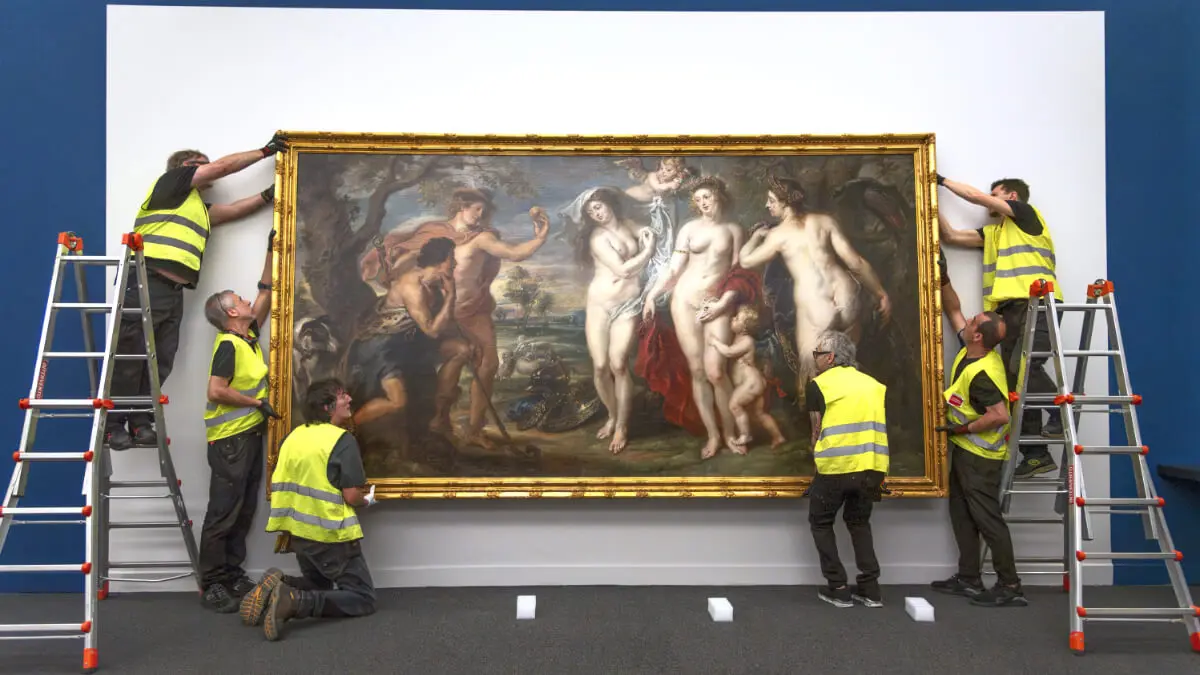
Dressed in reflective vests and gloves, the workers prepare to open the wooden box. The container, two metres high and almost four metres wide, lies delicately in a still empty room at CaixaForum Barcelona. The silence in the room could be cut with a scalpel. It is not every day that you witness the unpacking of a masterpiece of painting: this is The Judgement of Paris (1638-1639) by Peter Paul Rubens. The canvas, which will be the undisputed star of the exhibition Rubens and the Flemish Baroque Artists, has been resting in its wrapping for four days after travelling in a temperature- and humidity-controlled trailer from the Prado Museum in Madrid.
The piece does not travel alone. It is accompanied by a security escort and a ‘courier’ from the Prado, a technical professional whose job is to look after the works of art when they are loaned to other institutions. ‘We are responsible for checking that the pieces leaving the museum remain in the same condition,’ explains restorer and conservator Alicia Peral, courier for The Judgement of Paris, almost its ‘guardian angel’. ‘We are there when the box is closed in Madrid and when it is opened at its destination, as well as during the round trip.’
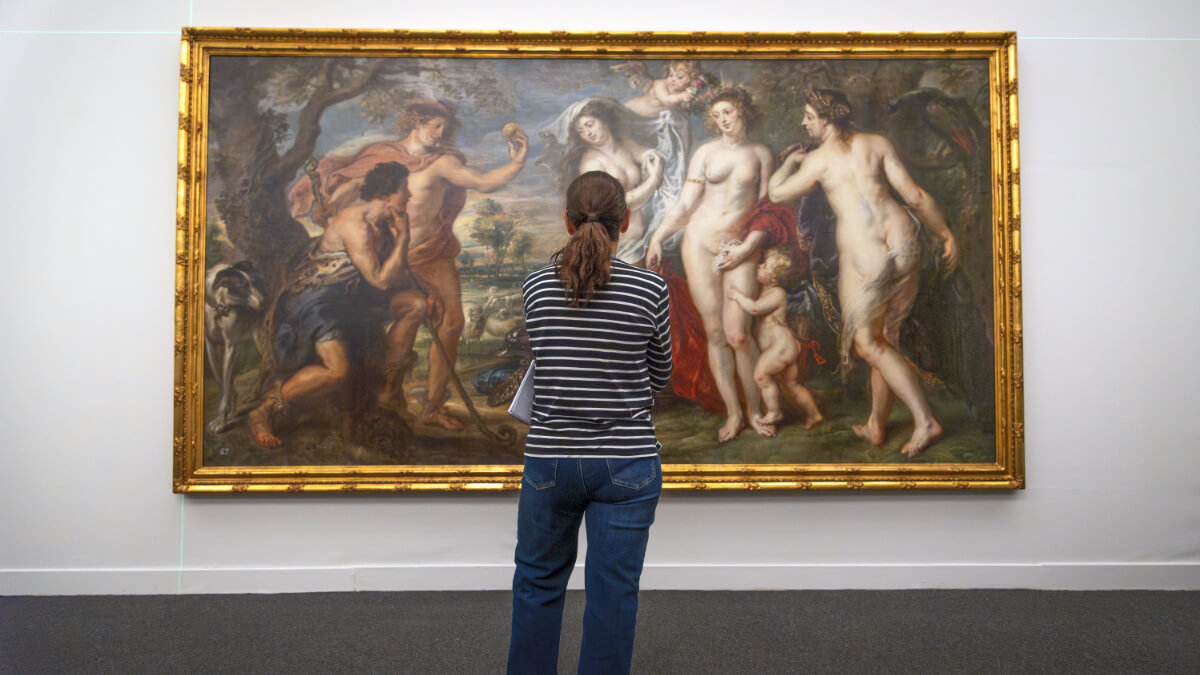
The painting's arrival in this room has not been easy. Anna Penalva, exhibition coordinator, tells us that one of the golden rules when transporting works of this type is to move them as little as possible, but when the canvas is large, things get complicated. Showing us images of the process on her mobile phone, Penalva explains that the lintel of an external iron door had to be sawn off so that the box could enter directly into the room where the painting will be exhibited.
Unpacking is something of a liturgy. All you can hear is the sound of hands rubbing against wood, the contact of tools, the murmur of instructions. It is a laborious process that demands instant silence when the group of six technicians removes, with almost choreographed precision, the outer cover of the custom-made protective box and reveals the composition.
‘Unpacking is something of a ritual. All you can hear is the sound of hands rubbing against the wood, the contact of tools, the murmur of instructions.’
At that moment, under the watchful gaze of the goddesses Juno, Minerva and Venus, Alicia Peral begins the technical evaluation, almost a ritual: documentation in hand, with a torch tracing the surface of the canvas and high-resolution photographic records as a guide. These tools, however, cannot replace her trained eye: ‘It's a job that depends a lot on observation,’ Peral points out. ‘Art is not perfect, and there are things like the tension of the canvas or certain deformations that only the human eye can appreciate.’
There are no surprises. After the wait, the technical assessment concludes satisfactorily. And this is no coincidence: ‘A lot of preparatory work is done to ensure that no unforeseen events occur,’ explains Peral. ‘The boxes are prepared so as not to affect the works, the trucks maintain temperature and humidity conditions... Everything is prepared so that there are no nasty surprises.’
Despite all the planning, the pace is set by the piece itself. ‘The type of check we do depends a lot on the condition and size of each work,’ explains the Prado's restorer. ‘In this case, the painting has just been restored, so it's in good condition, which helps us detect if anything has happened to it.’
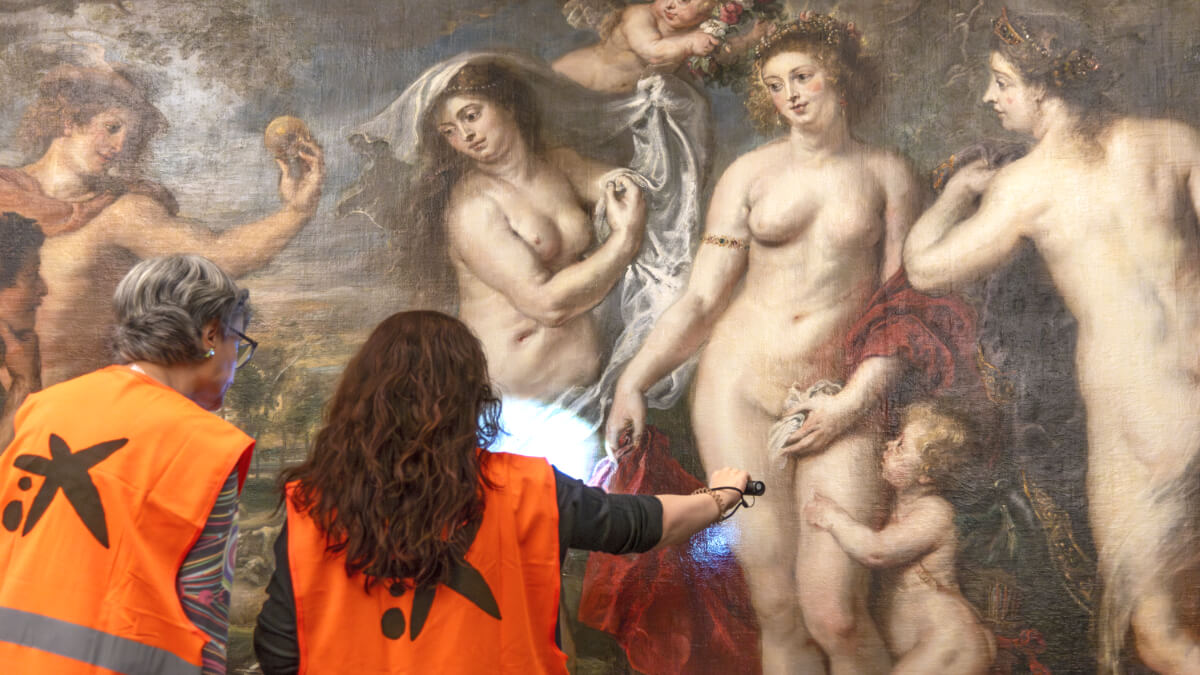
More shine after nine months of restoration
Until recently, The Judgement of Paris hung in one of the central corridors of the Prado, but it has undergone a nine-month restoration. In fact, the exhibition Rubens and the Flemish Baroque Artists will be the first time it has been shown to the public again. ‘The piece has been generally restored by the Prado's restorer, María Antonia López de Asiaín, who has restored its shine and balanced the composition,’ explains Alicia Peral. ‘A series of 18th-century additions that covered the nakedness of the goddesses out of modesty at the time have also been removed.’
The painting, which depicts a mythological scene in which Paris, prince of Troy, must choose the most beautiful of the goddesses Juno, Minerva and Venus, was a challenge by Rubens to the conventions of his time by emphasising the voluptuousness of the female figures. In Barcelona, the piece breathes freely and is displayed without any of the veils that had been added later to cover the bodies, thus restoring the artist's original intention. ‘Sometimes you see that some of the works on display can lose some of their meaning or their ability to communicate with viewers, and that it is necessary to restore them,’ explains Peral. ‘On this occasion, we saw that it was a time when we had the technical means to do so and that we could treat the work with confidence.’
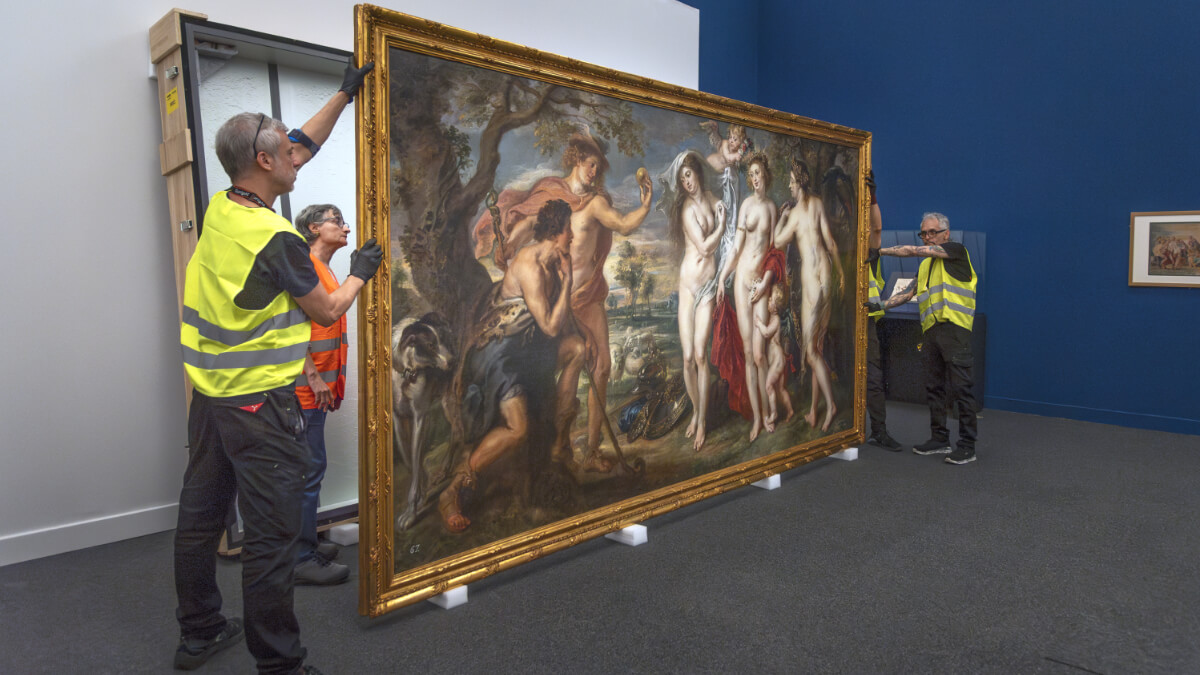
Hanging The Judgement of Paris, the final choreography
Once the review is complete, the group of art handlers, technicians specialised in handling works of art, ask for silence and space. The most delicate moment arrives, the final movement, with which the painting is suspended on one of the walls of the CaixaForum Barcelona exhibition halls. For a moment, almost like a painting within a painting, the figures of the six operators seem to dialogue with those in the work.
A feeling of relief fills the room. Standing at a distance, observing the result, Alicia Peral believes that the work will be appreciated ‘in a more intimate way’ in Barcelona.
The work now resting at CaixaForum Barcelona will play a central role in the exhibition Rubens and the Flemish Baroque Artists, which can be visited in Barcelona from 29 May to 21 September. The exhibition, curated by José Juan Pérez Preciado, focuses on the creative genius of Peter Paul Rubens, his influence on generations of painters and his key role in the transformation of the visual language of the 17th century. In the rooms, his works establish a dialogue with pieces by Van Dyck, Jordaens and Brueghel the Elder, demonstrating that his style represented an aesthetic revolution in European painting.
The exhibition brings together more than 60 works and objects, many of them from the lesser-known collections of the Prado Museum. Highlights include The Birth of Apollo and Diana, The Death of Seneca and The Immaculate Conception. All of these will share rooms with The Judgement of Paris, as well as the return journey, a process that will be carried out smoothly thanks to the Prado's couriers, who play a key role behind the scenes, away from the public eye.

